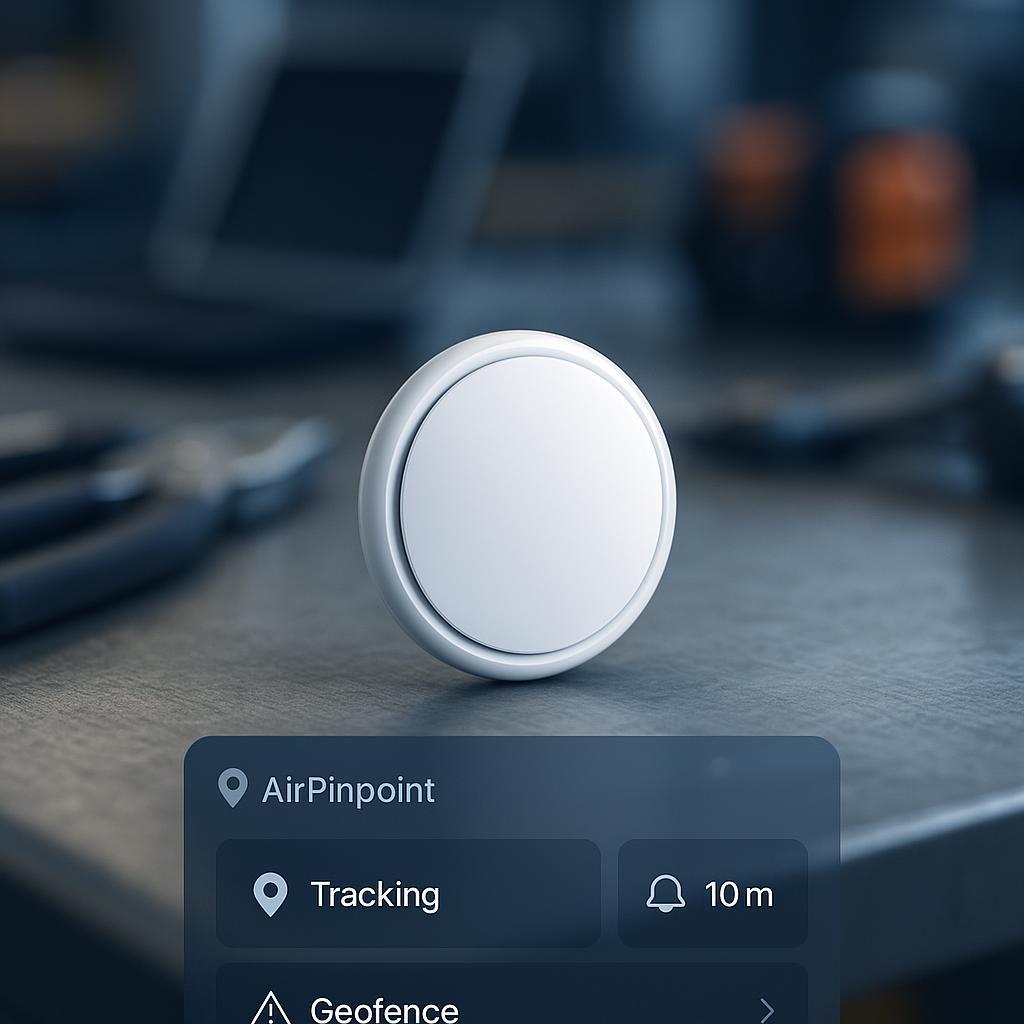GPS Tracking for Tools and Equipment: How It Works
Classic GPS Trackers
Classic GPS trackers work by using satellites to determine the precise location of a device. Here's how it works:
- Satellite Communication: GPS devices receive signals from multiple satellites orbiting the Earth.
- Location Calculation: The device calculates its position based on the timing differences of these signals.
- Data Upload: Location data is transmitted to a central system via cellular networks, providing real-time tracking.
Illustration: GPS Tracker with Antenna
![]()
AirPinpoint's BLE + Apple Network Approach
AirPinpoint offers a unique approach to asset tracking by leveraging Bluetooth Low Energy (BLE) and the Apple Find My network:
- BLE Communication: AirPinpoint devices use BLE to communicate with nearby Apple devices.
- Apple Network Relay: These Apple devices act as gateways, relaying location data to the Apple Find My network.
- Frequent Updates: This method provides frequent location updates without the need for live GPS movement.
Illustration: BLE Tag

Pros and Cons
| Feature | Classic GPS | AirPinpoint BLE + Apple Network |
|---|---|---|
| Live Movement Tracking | Yes | No |
| Battery Life | Shorter | Longer |
| Update Frequency | Less frequent | More frequent |
| Power Requirement | High | Low |
Common Misconceptions About GPS Tracking
When researching tracking solutions, many people have misconceptions about how GPS tracking works:
Misconception 1: "GPS trackers always work everywhere"
Reality: GPS requires line-of-sight to satellites, so it often struggles indoors, in dense urban areas with tall buildings, under heavy tree cover, or underground. Many people expect GPS to work flawlessly in all environments when it has significant limitations.
Misconception 2: "GPS trackers show real-time movement continuously"
Reality: Most GPS trackers don't update continuously due to battery constraints. They typically send location updates at scheduled intervals (every few minutes or hours) or based on events (like movement). Truly continuous tracking drains batteries very quickly.
Misconception 3: "GPS trackers only need satellites to work"
Reality: While GPS devices use satellites to determine their location, they need a separate communication method (usually cellular networks) to transmit this location data to the user. This means GPS trackers typically require cellular coverage and data plans to function properly.
Misconception 4: "All GPS trackers have short battery life"
Reality: Battery life varies dramatically based on update frequency and power management. Some trackers can last years with infrequent updates, while others may only last days with frequent updates. Understanding this trade-off is crucial when selecting a GPS solution.
Conclusion
Understanding the differences between classic GPS tracking and AirPinpoint's BLE + Apple network approach can help businesses choose the right solution for their needs. While classic GPS offers live movement tracking, AirPinpoint provides a more battery-efficient option with frequent updates. Explore our GPS tracking solutions today and find the best fit for your tools and equipment.


